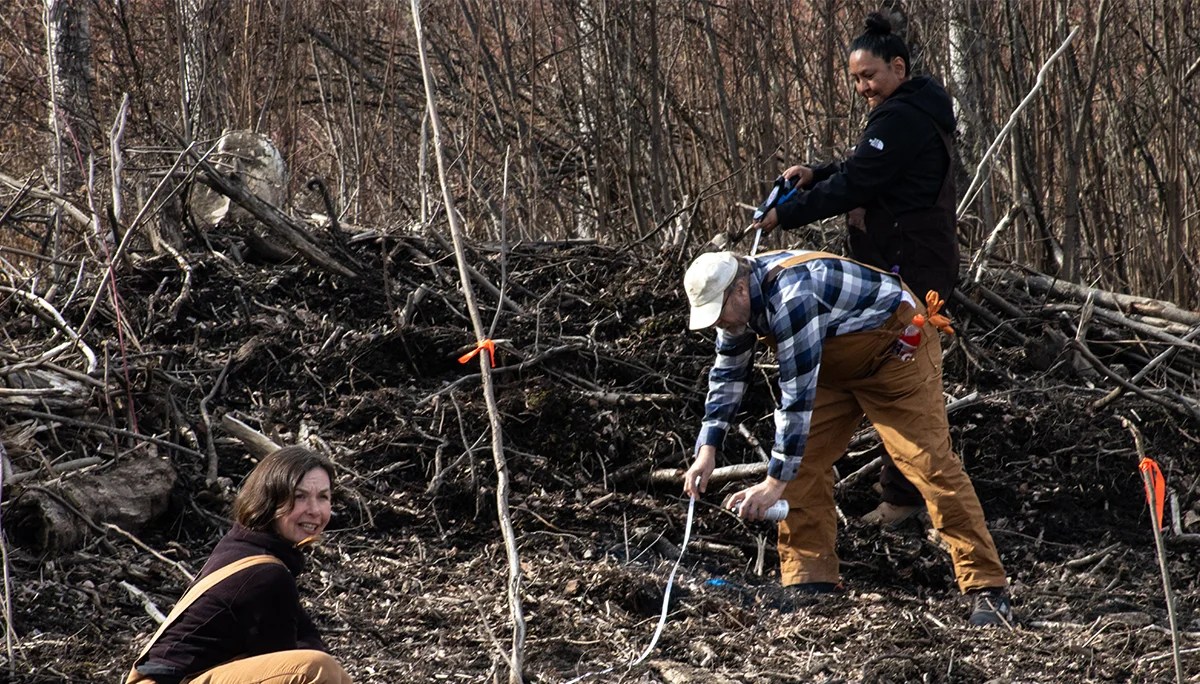Bioremediation Solutions in the Skeena Watershed
Organization: Skeena Watershed Conservation Coalition
This organization focuses on cultivating a sustainable future from a sustainable environment rooted in culture and a thriving wild salmon ecosystem in the Skeena watershed.
Location: Upper Skeena Watershed-Gitxsan Territory
Communities benefiting directly from the project: Gitwangak, Gitanmaax, Sikedakh and remote territories of Wilps ‘Wii K’aak.
Country: Canada
Other Organizations Involved: Wilps ‘Wii K’aak: Gitxsan Hereditary House Group (Wilp)
 @ Jennifer Bullied
@ Jennifer Bullied
Background
“Bioremediation Solutions in the Skeena Watershed” addresses watershed health by supporting communities to identify immediate and long-term threats to watershed security, to develop and implement innovative solution-oriented plans and projects that will reduce contamination and damage while enhancing environmental resilience and adaptability to climate change. Indigenous expertise and watershed stewardship knowledge will be engaged and resourced to facilitate collaborative planning efforts and develop place-based solutions that strengthen climate resilience and protect the watershed from ongoing and future risks and impacts. Bioremediation is the practice of working with natural systems (fungi, plants, and bacteria) to break down, extract or immobilize heavy metals and chemicals in soils and water. Weaving together Indigenous Knowledge and bioremediation techniques, community remediation and restoration plans and projects will be developed and implemented to support place-based healing for contaminated sites and to improve watershed health.
Goals
Project Goal 1: Support Wilps ‘Wii K’aax and Gitxsan community membership to lead watershed monitoring and bioremediation projects in response to contaminated sites scaling from small community lots to abandoned industrial mining and exploration camps through providing consultation, research and data collection, in-person support, plan implementation, field work, testing, training and logistics.
Project Goal 2: Build local knowledge and capacity to respond to watershed health threats, industrial contamination and climate disasters through providing training and knowledge-sharing opportunities in bioremediation, testing and research, field implementation and mycofiltration techniques for watershed health, wildfire mitigation and response, soil and water field sampling for contaminants and hazardous materials spill monitoring and mitigation.
Main activities
- Provide community bioremediation education and training opportunities for Gitxsan community and project partners.
- To support the implementation of bioremediation projects on Wilps ‘Wii K’aak territory in alignment with the Wilps ‘Wii K’aak Territorial Stewardship Initiative.
- Implement bioremediation projects at contaminated sites within the communities of Gitanmaax, Gitwangak and Sik-e-dakh and as a part of a community climate crisis response plan.
- Develop Community Education for Bioremediation platforms, both online and in person, that support the application of nature-based solutions.
Expected outcomes
Immediate, mid- and long-term threats to watershed security are identified, Wilp-led monitoring and bioremediation plans are implemented. This work supports Territorial Stewardship Initiatives and Indigenous Protected and Conservation Area planning as well as community-level response to contaminated sites, like those used for food production or community drinking water.
Community members hold and apply the knowledge gained through training and application of bioremediation and traditional earth repair practices to enhance watershed stewardship and conservation projects. Local expertise is increased to ensure regional and culturally specific training opportunities through a “train the trainer” model of knowledge building. Knowledge gleaned from the work is shared through a variety of mediums, ensuring open access and an ecosystem of ongoing learning.